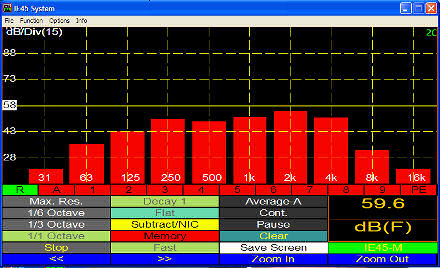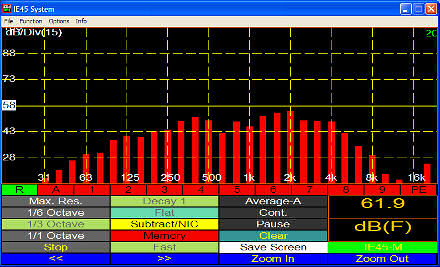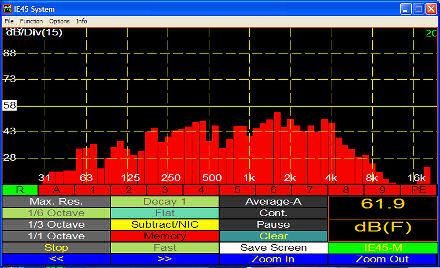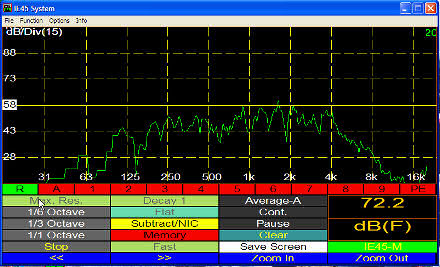IE-45 RTA
Octave Display

1/3 Octave Display

1/6 Octave Display

1/12 Octave Display

Frequency Detect
This feature employs a rapid, high resolution FFT to identify frequencies display from 20Hz to 2kHz at a greater than 0.5 Hz resolution in order to help identify ring modes, feedback frequencies, standing waves and other generally LF phenomena.
NIC
Excellent feature for consultants. Quick and accurate transmission loss measurements in NIC. Take running or spot averages on both sides of a barrier, then at the touch of a button (in Subtract mode), display the plotted data and calculated Class number.
NC/NR
Quick and accurate Noise Criteria or Noise Reduction measurements.
Averaging
By activating Average, the user can automatically collect a continuing series of samples which are then averaged to a single line of data points. The user can also manually collect samples using Trigger mode. The Average data can be saved to a file name, ported to a PC and further manipulated or printed. The IE‑45's method of averaging is easier and superior than attempting to average individual stored memories. The IE‑45 performs two types of averaging: Arithmetic and Power Averaging.
Preferred Curve
The Preferred Curve function allows the user to manually create (or load from a stored file) a preferred or "target" curve which presents itself as a screen overlay. Target curves can be used for equalizing to a specific "desired house curve" or where any specific, targeted end result is desired.
Memory Management
The IE‑45 has a very flexible Memory Management screen that allows renaming, storing, loading, clearing and other memory management functions. Scratch memories, preferred curve memories, curve subtraction results, and peak value curves can be loaded, stored, cleared and renamed with Memory Management. Virtually unlimited storage memory.
Spectrograph
One use of the spectrograph is when you have some transient sound like a cymbal crash where you want to explore the spectral content over a short period of time.
Spectrograph is also used for loudspeaker testing: you can see ringing in the cabinet walls if you watch the spectrograph while an impulse is played. Speech analysts use them routinely.

